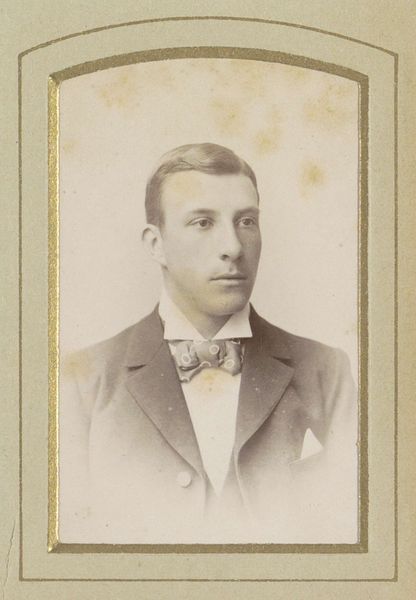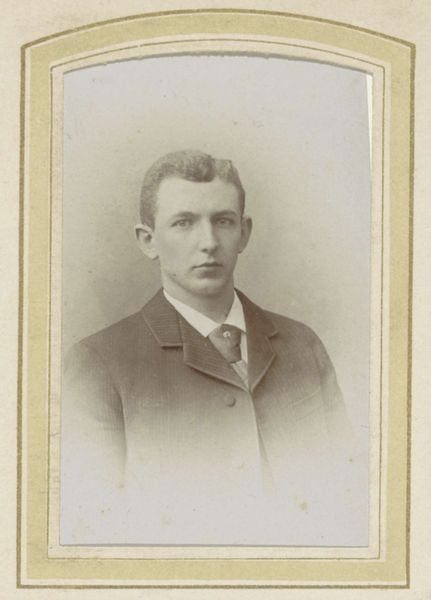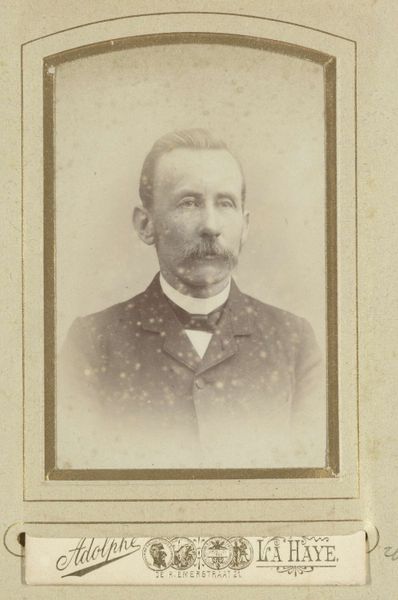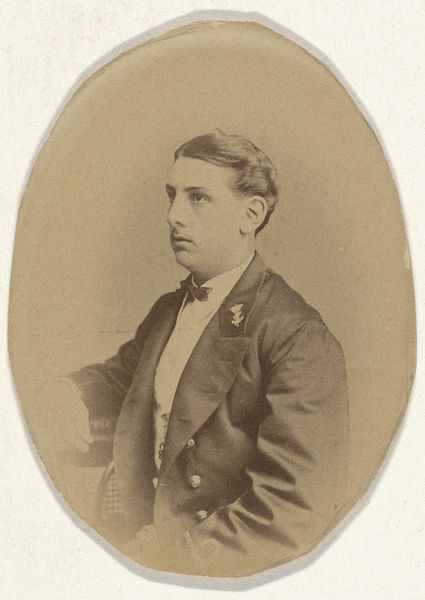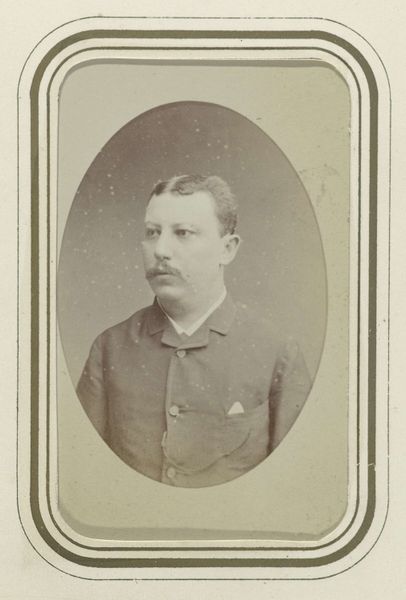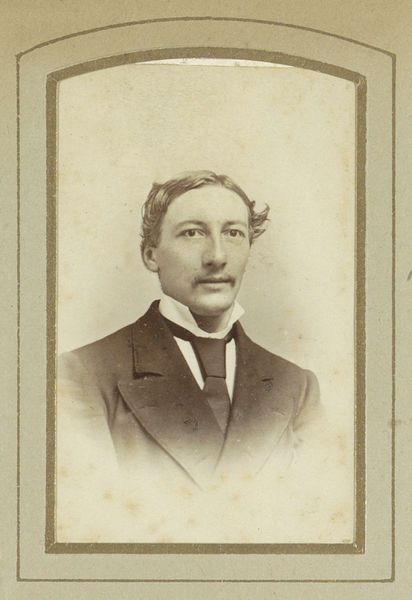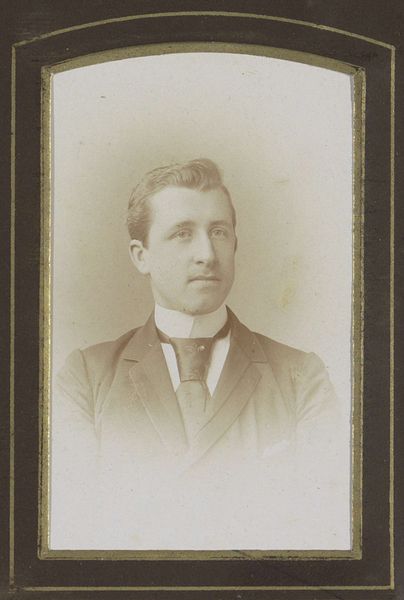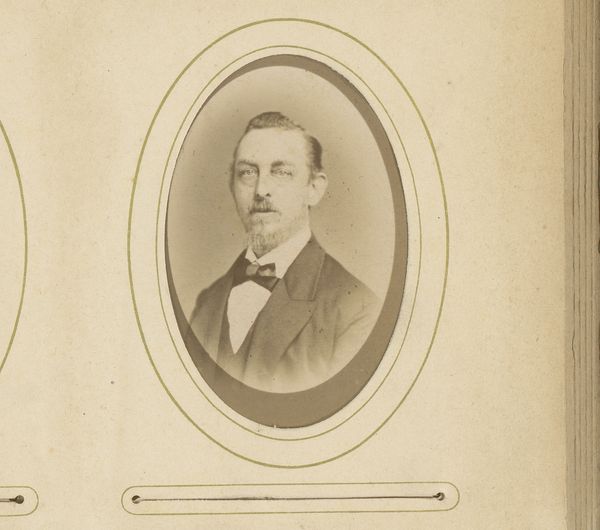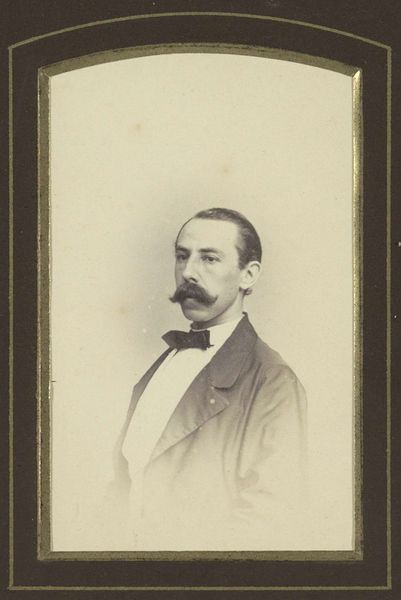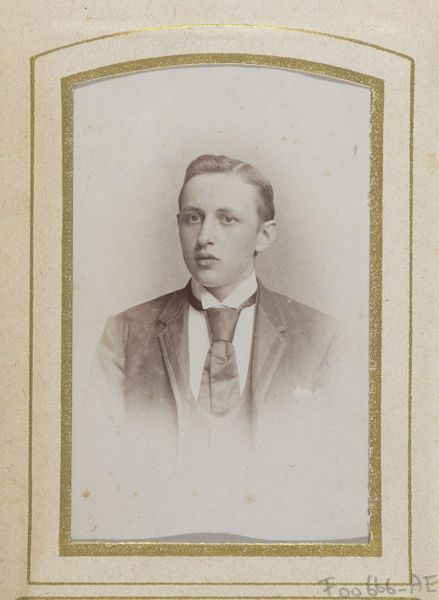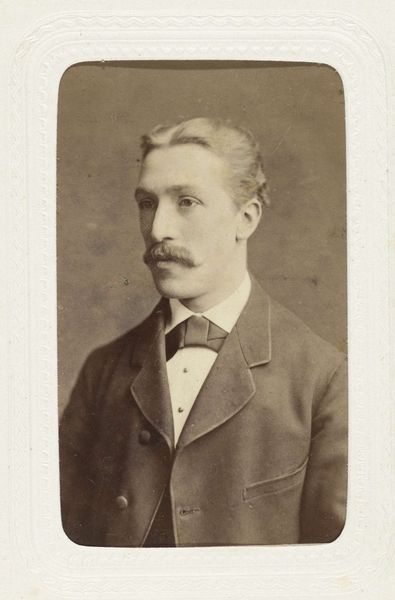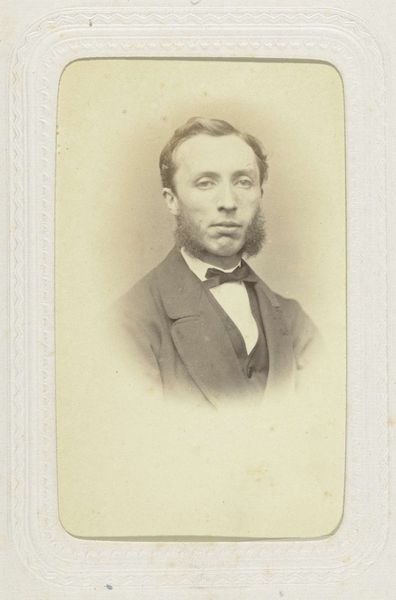
photography, gelatin-silver-print
#
portrait
#
archive photography
#
photography
#
historical photography
#
gelatin-silver-print
#
19th century
#
academic-art
#
realism
Dimensions: height 88 mm, width 53 mm
Copyright: Rijks Museum: Open Domain
Editor: Here we have a gelatin silver print from between 1880 and 1886 titled "Mansportret" by an anonymous artist. I’m struck by the sitter’s reserved expression, contrasted against the formality implied by the suit and medals. How can we interpret this image through a contemporary lens? Curator: It’s compelling to think about this image through a Materialist lens. This gelatin silver print represents not just a likeness, but a complex interplay of industrial processes, chemical reactions, and labor. Consider the specific materials: gelatin derived from animal collagen, silver halides sensitive to light. Editor: That's an interesting way to look at a picture. Can you elaborate on that? Curator: Yes, we have to consider how were these materials extracted, processed, and distributed in the 19th century? Photography democratized image-making, but at what cost? What kinds of labor were involved? Were they safe, sustainable or equitable? Editor: So you are more interested in the manufacture and its origins rather than aesthetics. Curator: Exactly. It encourages us to reflect on consumption, class, and the illusion of “neutral” representation. How does seeing this as a material object, the result of particular industries and processes, change your interpretation of the man’s portrait itself? What could the material's life tell us about his? Editor: Thinking about the production makes the image more about economic history than personal identity. It sounds like there's a real tension between what the photograph presents, and what its materiality reveals. Thank you! Curator: Precisely, viewing the image through a material lens reminds us how value systems of labor and social structures are at the root of cultural creation and production, so we can consider how it operates as an agent within those historical forces. Thank you for engaging with it from a production focused perspective!
Comments
No comments
Be the first to comment and join the conversation on the ultimate creative platform.
